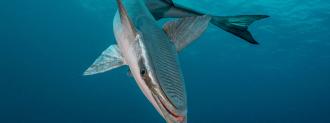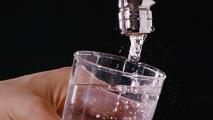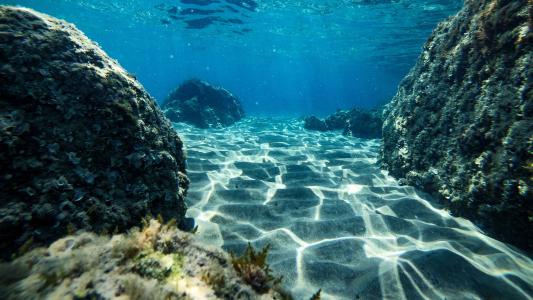I was far enough from the South Carolina shore to have no solid mass on the horizon, bobbing in the emerald green Atlantic on a line behind a dive boat, when a serpentine motion beneath me caught my attention.
Circling just below was a free-swimming remora — the suckerfish famous for hitching a ride on bigger marine animals; from above, the fish’s cephalic idiosyncrasies (that is, its weird-looking head) seemed like someone had dropped a tire on it, a flattening above the face covered in ridges.
While singularly stupid-looking even among fish, that goofy indentation is the key to the remora’s success: using its suction discs, the remora hitchhikes on larger animals for food and shelter.
Those suckers — actually, a wildly modified dorsal fins — have inspired the creation of artificial suction discs using the same principles.
The remora’s disc has a fleshy lip to generate suction, then ridges of flesh with tiny, toothy projections sticking out that generate friction. Combined, the remora can grab and stick to a remarkable variety of surfaces, even with the intense drag of water.
Now, researchers have new footage of the remora’s mighty sucking power in action. Using footage gathered from cameras (appropriately) suction-cupped to the whale, they took the most in-depth observations yet of remoras hitching a ride.

A remora moving about its business… on a blue whale. Credit: Stanford University and Cascadia Research NMFS Permit 16111
“Through lucky coincidence, our recordings captured how remoras interact in this environment and are able to use the distinct flow dynamics of these whales to their advantage,” the New Jersey Institute of Technology’s Brooke Flammang told New Atlas.
“It is incredible because we’ve really known next to nothing about how remoras behave on their hosts in the wild over any prolonged period of time.”
Published in the Journal of Experimental Biology, the researchers discovered insights into the remora’s unique way of life, which may help develop better trackers for whales and fish — after all, we want them to stick like the remora does!
The team observed 27 remoras that hung out in 61 different places, but three spots on the blue whale were the most popular; it turns out that a remora has an aircraft designer’s sensibilities when it comes to drag. The remoras preferred those spots — behind the blowhole, around the tiny back dorsal fin, and tucked right above its pectoral fin — because they reduced the drag from the water by 71-84%.
Even wilder, they move about the surface of the whale — which can move much faster than the remora can — by “surfing” and “skimming” along the leviathan’s skin. Closer to the whale is a thin layer of water with over 70% less drag than the water directly above it; by surfing in this narrow band and skimming along the surface, attaching and detaching its suction disc as it goes, the remora can move around freely without getting blown away.
“In this narrow space between the remora and whale, when fluid is funneled into a narrow space it moves at a higher velocity but has lower pressure, so it is not going to push the remora away but will actually suck it toward the host,” Flammang said in a press release.
The remora’s super-suction can handle the less hospitable places on the whale, too — they’re just working smarter.
“We learned that the remora’s suction disk is so strong that they could stick anywhere, even the tail fluke where the drag was measured strongest, but they like to go for the easy ride,” said Erik Anderson, a biofluid dynamics researcher at Grove City College.
“This saves them energy and makes life less costly as they hitchhike on and skim over the whale surface like a NASA probe over an asteroid or some mini-world.”
Beyond uncovering the suction secrets of the remora, the researchers will continue to study the fluid dynamics of the whale — and how remoras and other creatures operate with and around them — to better design animal tags and identify the best targets on whales and other migratory creatures to stick them.





